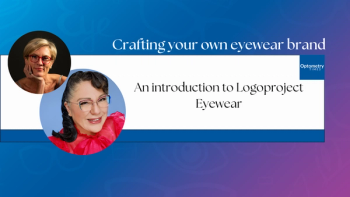
AOA 2025: An OD's guide to swollen nerves with Dr Mohammad Rafieetary
Alongside Rachel Steele, OD, Rafieetary outlines what to look for in blurred disc margins and the importance of acting fast and sending patients to the ED when needed.
Mohammad Rafieetary, OD, FAAO, FORS, Dipl ABO, ABCMO, discussed his one of the many presentations he gave swollen nerves and blurred vision diagnostic approaches at the American Optometric Association's Optometry's Meeting 2025. The lecture, co-created with Rachel Steele, OD, is designed to be an engaging one-hour session that explored various conditions causing blurred vision. Rafieetary emphasized the critical nature of these conditions, which can potentially signal life-threatening medical issues. The presentation challenged audience members to participate by answering diagnostic questions and understanding different management strategies.
Diagnostic tools are a key component of the lecture. Rafieetary highlighted several important diagnostic methods, including visual fields, optical coherence tomography (OCT), and pupil testing. He acknowledged that pupil testing can be complex, especially for patients with prior medical histories like cataract surgery or trauma. The importance of comprehensive patient history cannot be overstated, with factors like body mass index (BMI) playing a significant role in diagnosis.
A crucial aspect of the lecture focused on identifying emergency situations requiring immediate medical intervention. Rafieetary provides specific examples of when patients should be directed to the emergency room, such as:
- Pregnant patients with high blood pressure
- Patients presenting with papilledema
- Instances of anterior ischemic optic neuropathy
He passionately advocated for proactive patient care, comparing the urgency of medical attention to how people readily call emergency services for other situations. Rafieetary recommended that healthcare professionals not hesitate to call ambulances or emergency services when a patient's condition appears potentially life-threatening.
Beyond this specific lecture, Rafieetary will be presenting multiple talks at the conference, including discussions on fundus autofluorescence, OCT technologies, and inherited retinal disorders. He will also conduct 2 hands-on workshops: an OCT workshop and a technology workshop. The conversation reflected Rafieetary's commitment to comprehensive patient care, diagnostic precision, and continuous medical education. His collaborative approach, working with colleagues like Steele, Roya Attar, OD, MBA, DHA, and Jessica Haynes, OD, underscores the importance of teamwork in advancing medical knowledge and patient treatment strategies.
Newsletter
Want more insights like this? Subscribe to Optometry Times and get clinical pearls and practice tips delivered straight to your inbox.














































.png)


